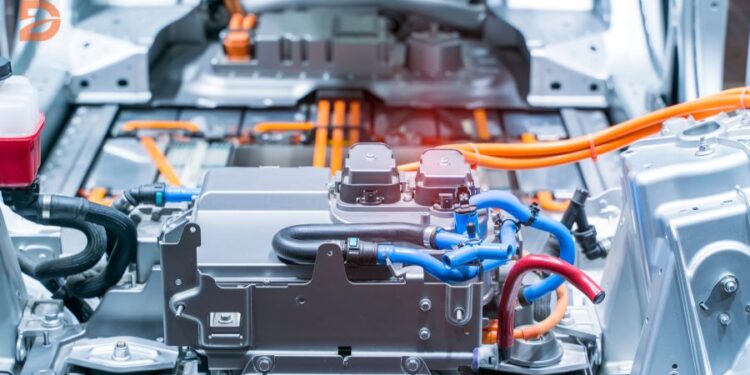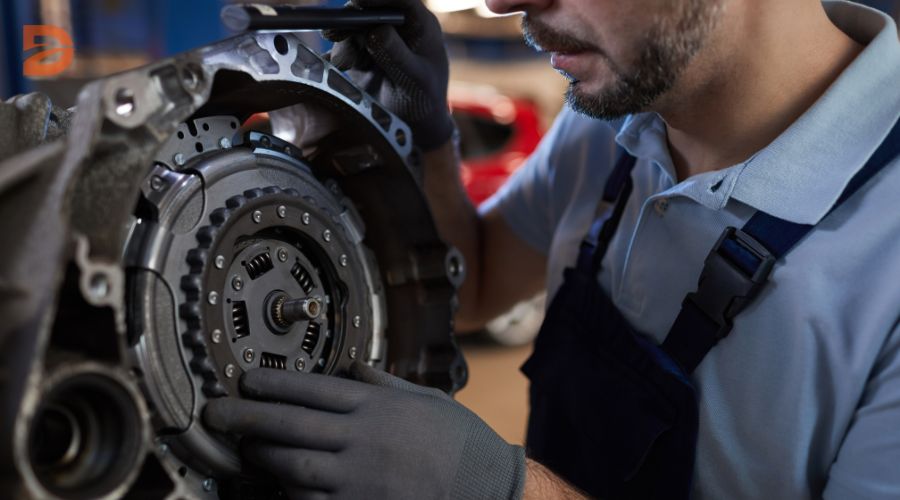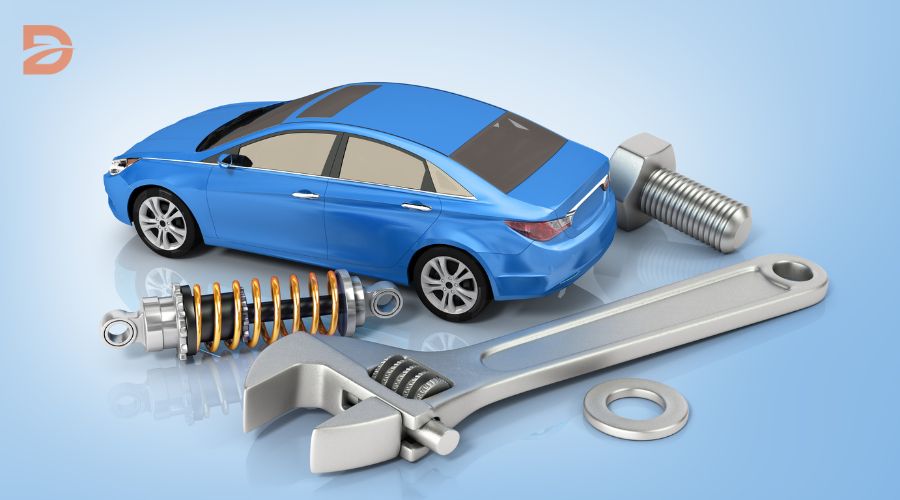Imagine a world where you could save money on car repairs without sacrificing quality or sustainability. Welcome to the realm of remanufactured car parts, where affordability, eco-friendliness, and reliability converge. But are these parts truly a viable alternative to brand-new replacements? Let’s dive in and explore the hidden benefits that could have you rethinking your next automotive repair.
Key Takeaways
- Remanufactured parts use up to 80% less energy compared to new parts production.
- TRW remanufactured parts save over 1,500 tons of CO² emissions annually
- Remanufactured parts can cost up to 25% less than new replacement parts
- Remanufacturing helps conserve precious raw materials like steel, aluminum, and copper
- Remanufactured parts contribute to a circular economy and support sustainability efforts
Understanding Remanufactured Parts: A Sustainable Choice
When it comes to maintaining and repairing vehicles, savvy car owners often turn to remanufactured car parts as a cost-effective and environmentally friendly alternative. Remanufactured parts are used OEM parts that have undergone a rigorous process of cleaning, inspection, and repair to meet or exceed the original performance standards.
What Are Remanufactured Car Parts?
Remanufactured car parts are automotive components that have been disassembled, cleaned, inspected, and then reassembled with new or recycled components to bring them back to their original specifications. This process allows for the preservation of the part’s inherent value and quality while reducing the environmental impact compared to manufacturing a brand-new part.
The Remanufacturing Process
The remanufacturing process involves several critical steps:
- Disassembly: The part is carefully disassembled into its components.
- Cleaning: All parts undergo a thorough cleaning to remove any dirt, debris, or wear and tear.
- Inspection: Each component is inspected for wear, damage, or defects, and any necessary replacements are made.
- Reassembly: The part is then reassembled using the original or recycled components to meet or exceed the original manufacturer’s specifications.
- Testing: The remanufactured part undergoes rigorous testing to ensure it meets or exceeds the original performance standards.
This comprehensive process ensures that remanufactured car parts provide the same level of quality and reliability as new parts but with a reduced carbon footprint and a more environment-friendly approach.
| Remanufactured Parts | New Parts |
|---|---|
| Cleaned, inspected, and repaired to meet original specifications | Manufactured from raw materials |
| Reduce the need for raw material extraction and energy consumption | Require more energy-intensive manufacturing processes |
| 25-45% cost savings compared to new parts | Higher initial cost |
| 12-24 months warranty | Varies by manufacturer |
Environmental Benefits of Remanufactured Car Parts
Remanufactured car parts offer a sustainable and eco-friendly solution that benefits the environment. The remanufacturing process not only reduces carbon emissions and energy consumption but also supports a circular economy, conserving valuable resources and minimizing waste.
Reducing CO² Emissions and Energy Consumption
According to research, the remanufacturing process used by leading providers like Vehicle Reman uses only 16% as much land and 25% as much energy as traditional car part production. Their process also produces just 20% of the greenhouse gas emissions and 14% of the toxic air pollution compared to standard manufacturing. Their remanufacturing efforts have saved a remarkable 4,799 megawatt hours of energy and 17.3 million gallons of water as of July 2018.
Promoting a Circular Economy
Remanufactured engines also play a crucial role in promoting a circular economy. By extending the lifespan of existing vehicles, remanufacturing reduces the need for newly manufactured parts, minimizing the volume of non-biodegradable waste that would otherwise end up in landfills. Additionally, remanufactured engines can lead to significant improvements in fuel efficiency and a reduction in harmful pollutants emissions, such as nitrogen oxide, carbon monoxide, and particulates.
“Remanufacturing engines decreases the volume of non-biodegradable waste that would end up in landfills, helping in conserving landfill space.”
The environmental benefits of remanufactured car parts are clear. By reducing carbon emissions, energy consumption, and waste, while promoting a circular economy, remanufactured components play a vital role in creating a more sustainable automotive industry.
Remanufactured car parts, eco-friendly
When it comes to maintaining your vehicle, choosing remanufactured car parts is an eco-friendly decision that can make a significant impact on the environment. Remanufactured parts are created using a process that recycles and restores used components to like-new condition, reducing the need for extracting and processing raw materials.
The benefits of opting for remanufactured, eco-friendly car parts are numerous. According to SUSTAINera, a leading provider of sustainable automotive solutions, their remanufacturing process can save up to 85% of the energy required to produce new parts. Additionally, their recycling efforts have resulted in the diversion of over 2 million parts from landfills in 2023 alone.
- SUSTAINera has a stock of more than 7 million recycled components ready for reuse, spanning 12,000 part numbers across 38 product lines.
- The company’s goal is to extend the lifespan of vehicles and parts, reducing waste and promoting a circular economy.
- Remanufacturing requires only 15% of the total energy needed for new part production, resulting in significant energy savings and a reduced carbon footprint.
By choosing remanufactured, eco-friendly car parts, you are not only saving money but also contributing to a more sustainable automotive industry. These green vehicle parts offer the same performance and reliability as new components but with a much lower environmental impact.
Cost Savings and Value for Money
Investing in remanufactured car parts can provide substantial cost savings compared to purchasing brand-new components. According to industry surveys, remanufactured auto parts are typically 30-40% cheaper than their new counterparts, making them a more affordable option for car owners, especially those with older vehicles.
By extending the life of existing vehicles through the use of remanufactured parts, consumers can avoid the environmental impact and costs associated with replacing their cars prematurely. Remanufactured auto parts have a longer lifespan due to rigorous quality assurance tests, ensuring reliable performance and durability. This not only saves money in the long run but also contributes to a more sustainable automotive industry.
| Benefit | Statistic |
|---|---|
| Cost Savings | Remanufactured auto parts are 30-40% cheaper than new parts |
| Environmental Impact | Remanufactured auto parts reduce carbon emissions by nearly 400 kilotons yearly. |
| Resource Conservation | The raw materials saved yearly due to remanufacturing could fill 155,000 railroad cars. |
By choosing remanufactured car parts, consumers not only save money but also contribute to a more eco-friendly and sustainable automotive industry. This mutually beneficial approach allows car owners to maintain their vehicles while reducing their carbon footprint and supporting a circular economy that promotes the reuse of recycled components.
Conclusion
Remanufactured car parts present a compelling option for eco-conscious consumers and businesses in the United States. By choosing remanufactured components, individuals can contribute to a more sustainable automotive industry, support a circular economy, and enjoy the same performance and reliability as new parts. With the growing importance of environmental stewardship, remanufactured car parts offer a smart, eco-friendly solution for vehicle maintenance and repair, helping to reduce carbon footprint, conserve natural resources, and minimize waste.
The remanufacturing process has been shown to significantly reduce material and energy consumption compared to traditional manufacturing, making it a viable choice for those seeking environment-friendly replacements and energy-efficient repairs. By supporting the reused auto parts industry, consumers can contribute to a more circular economy and help drive the adoption of green vehicle parts.
In conclusion, remanufactured car parts present a win-win solution, allowing users to save money while making a positive impact on the environment. As the automotive industry continues to evolve towards more sustainable practices, the demand for eco-friendly options like remanufactured components is expected to grow, positioning them as a crucial element in the transition towards a greener, more resource-efficient future.
FAQ
What are remanufactured car parts?
Remanufactured parts are used OEM parts that have been thoroughly cleaned, repaired, and reassembled to meet original specifications. The remanufacturing process involves disassembly, cleaning, inspection, replacement of worn components, and final testing to ensure the part meets or exceeds original performance standards.
How does the remanufacturing process work?
The remanufacturing process involves disassembly, cleaning, inspection, replacement of worn components, and final testing to ensure the part meets or exceeds original performance standards. This process allows for the preservation of the part’s inherent value and quality while reducing the environmental impact compared to manufacturing a brand-new part.
What are the environmental benefits of remanufactured car parts?
Remanufacturing significantly reduces CO² emissions and energy consumption compared to producing new parts. According to Circulate, an organization that researches sustainability, remanufacturing uses 80% less energy than manufacturing new automotive parts. Remanufacturing also supports a circular economy by keeping existing vehicles on the road longer and conserving raw materials, rather than contributing to waste and resource depletion.
How do remanufactured parts compare to new parts in terms of quality and reliability?
Remanufactured parts are equivalent to brand-new parts in terms of quality and robustness, making them a reliable choice. The remanufacturing process ensures that the part meets or exceeds original performance standards, preserving the inherent value and quality of the component.
How much can you save by using remanufactured car parts?
Remanufactured parts offer significant cost savings compared to new parts, often costing up to 25% less. This makes them a more affordable option, especially for owners of older vehicles. By extending the life of existing vehicles through the use of remanufactured parts, consumers can avoid the environmental impact and costs associated with replacing their cars prematurely.










